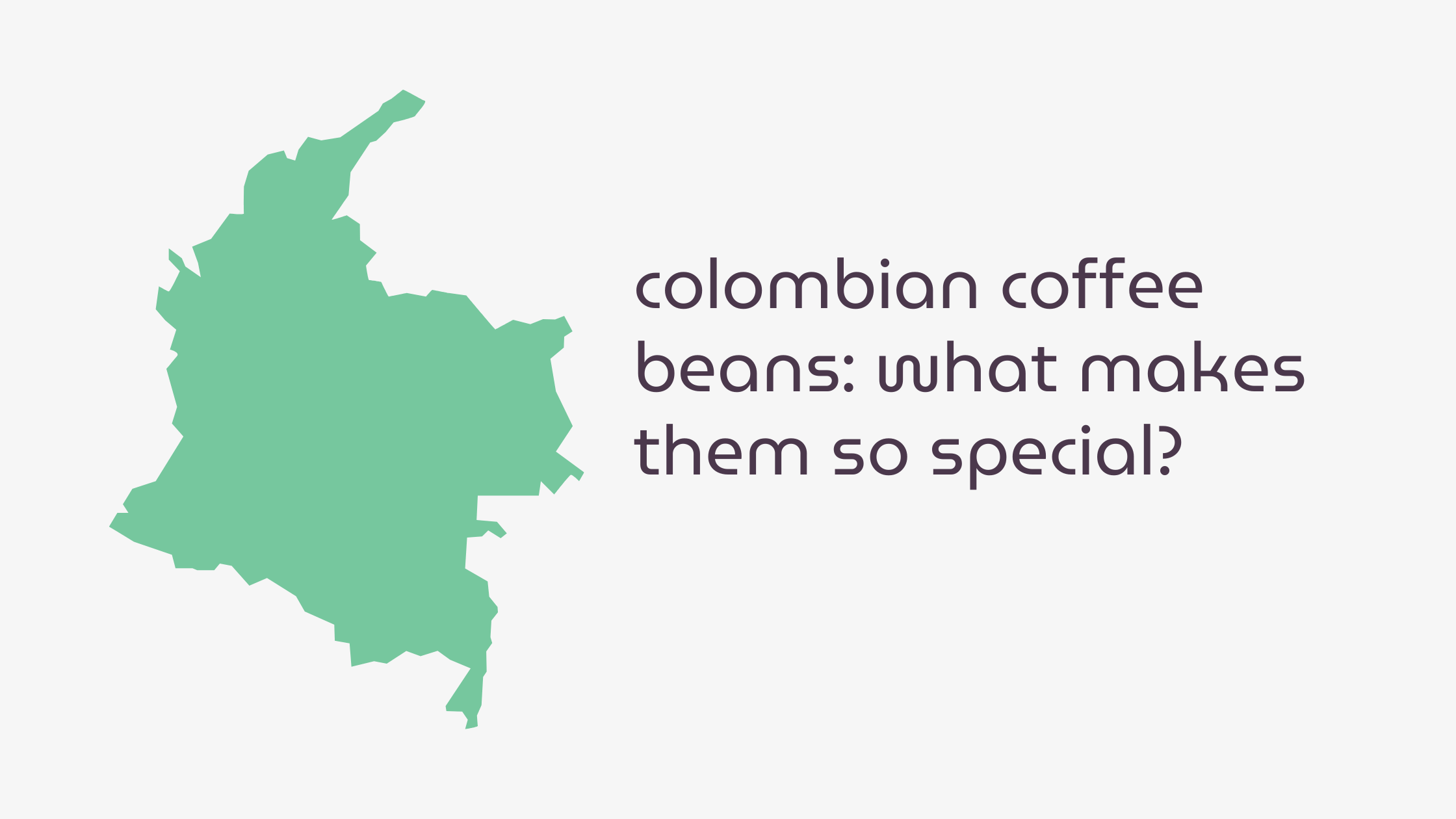
Colombian Coffee Beans: What Makes Them So Special?
Colombian coffee beans are famous for their smooth, bright flavor. Learn what makes them so special, from regions like Nariño to how to brew them best.
Colombian coffee beans are some of the most celebrated in the world—and for good reason. Grown in the lush, mountainous regions of Colombia, these beans are known for their bright acidity, rich body, and clean, complex flavor. Whether you enjoy your coffee as a pour-over, French press, or espresso, Colombian beans offer a balance that’s hard to beat.
But what exactly makes Colombian coffee beans so special? From elevation and climate to traditional farming and processing methods, there’s a lot that goes into every cup. Let’s break it down.
What Makes Colombian Coffee Beans Stand Out?
Colombian coffee has a reputation for flavor clarity and balance. These beans are typically:
- Bright and citrusy, with medium acidity
- Smooth in body, with red fruit, caramel, or cocoa notes
- Clean in finish, thanks to washed processing
- Highly consistent, even across microregions
Unlike coffees with overpowering bitterness or smoky flavors, Colombian beans tend to be smooth, approachable, and layered—making them a favorite for both specialty cafés and everyday drinkers.
Why Colombia Is Ideal for Growing Coffee
Geography is everything in coffee, and Colombia’s natural conditions are nearly perfect:
- Elevation: Most Colombian coffee is grown between 1,200 and 2,200 meters—ideal for slow, dense bean development.
- Climate: The equatorial location and rainfall patterns allow for two harvest seasons.
- Soil: Volcanic soil and lush vegetation support nutrient-rich growth.
- Farming practices: The majority of farms are smallholder and family-run. Beans are hand-picked and traditionally processed.
- 100% Arabica: Colombia exclusively grows Arabica varieties, prized for their smooth, nuanced flavors.
This combination of altitude, microclimates, and farming tradition gives Colombian coffee its signature balance and brightness.
Colombian Coffee Regions You Should Know
While the entire country produces coffee, several regions have earned worldwide recognition for their distinct flavor profiles. One of the most acclaimed? Nariño—home to the beans in Happi Colombia.
Nariño
High-altitude and high-impact. Nariño coffee is grown at elevations above 1,800 meters, where cooler temperatures allow the cherries to mature slowly. The result? A crisp, sweet cup with notes of citrus, florals, and subtle chocolate.
Huila
Perhaps Colombia’s most famous specialty region. Huila coffees are known for their full body, juicy acidity, and notes of red fruits and panela (unrefined cane sugar).
Antioquia
A historic region with more commercial-scale production, though small farms are increasingly producing specialty-grade lots.
Tolima
An emerging star in the specialty world, often overlooked due to past conflict. Its coffees are now gaining attention for their complexity.
Cauca
A high-altitude region near the Andes known for vibrant, floral coffees with tropical acidity.
The Washed Process: Clarity in Every Cup
Nearly all Colombian coffee beans are processed using the washed (wet) method, which helps preserve the bean’s origin character and crisp acidity. After harvesting, the fruit is removed from the seed, then the beans are fermented, washed, and sun-dried.
This method leads to:
- Cleaner flavor with more distinct fruit and floral notes
- Less muddiness than naturally processed coffees
- More consistency, especially when paired with Colombia’s hand-picking traditions
If you’ve ever compared a washed Colombian coffee with a natural Brazil, you’ve probably noticed the clarity and brightness shine through.
How to Choose the Best Colombian Coffee Beans
Looking to try Colombian beans at home? Here are a few things to consider:
1. Know the Region
Nariño = bright and floral
Huila = fruity and balanced
Antioquia = chocolatey and smooth
2. Match the Roast to Your Taste
- Light roast: Highlights fruit and floral notes (best for Nariño or Cauca)
- Medium roast: Balanced, with sweetness and depth (great for Huila or Tolima)
- Dark roast: Smooth and full-bodied, with less acidity (Antioquia or blended origins)
3. Pick Your Brewing Method
- Pour-over: Showcases acidity and clarity
- Drip machine: Smooth and consistent
- French press: Brings out body and depth
- Espresso: Chocolate and caramel notes shine
Colombian Coffee Regions at a Glance
| Region | Flavor Profile | Elevation | Process | Best Brew Method |
|---|---|---|---|---|
| Nariño | Citrus, floral, honey | 1,800–2,200m | Washed | Pour-over, drip |
| Huila | Red fruit, caramel, panela | 1,300–1,800m | Washed | Drip, French press |
| Antioquia | Chocolate, nutty | 1,200–1,800m | Washed | Espresso, French press |
| Tolima | Cocoa, plum, spice | 1,400–1,900m | Washed | Drip, medium roast |
| Cauca | Tropical fruit, citrus | 1,600–2,000m | Washed | Pour-over, light roast |
Conclusion
Colombian coffee beans are more than just popular—they’re exceptional. With rich volcanic soil, high elevations, and generations of smallholder expertise, Colombia consistently produces beans that are bright, flavorful, and deeply satisfying.
From the crisp citrus of Nariño to the sweetness of Huila and the chocolatey depth of Antioquia, there’s a Colombian profile for every taste and brewing method.
Want to experience it for yourself? Try Happi Colombia—our smooth, single-origin roast from Nariño—and explore more in our Single Origin Coffee Guide.

